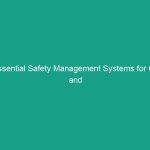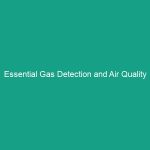Introduction
Good morning team! Today, we are going to discuss a crucial aspect of Workplace Safety that can significantly impact our daily operations: Essential Situational Awareness Guidelines. Understanding and applying these guidelines is vital for avoiding critical risks in our work Environment. Situational awareness is not just a buzzword; it’s a fundamental skill that can save lives and prevent injuries. Let’s dive into why this topic matters and how we can all benefit from enhancing our awareness on the job.
Understanding Essential Situational Awareness
So, what is situational awareness? In simple terms, it refers to the ability to perceive and understand what is happening around you. This includes being aware of your surroundings, recognizing potential Hazards, and understanding the context of your environment. Good situational awareness allows you to anticipate and respond to risks effectively.
Every day, we face various challenges and potential dangers in the workplace. For example, a construction worker needs to be aware of heavy machinery moving nearby, while an office worker must recognize the signs of a fire hazard. Misunderstanding or ignoring these elements can have severe consequences, including accidents and injuries. Unfortunately, many employees believe that situational awareness is a skill that can’t be improved, which is a misconception we need to address.
Key Hazards, Risks, and Safety Considerations
Now, let’s talk about specific hazards and risks associated with a lack of situational awareness:
- Environmental Hazards: Weather conditions, such as rain or fog, can impact visibility and Safety.
- Equipment Operation: Failing to notice equipment malfunctions or the presence of other workers can lead to accidents.
- Human Factors: Distractions, fatigue, and stress can impair our awareness and decision-making.
- Emergency Situations: In a crisis, such as a fire or medical emergency, being aware of exit routes and the location of first aid can save lives.
Ignoring these risks can lead to serious incidents. For example, there have been cases where workers failed to notice an oncoming vehicle because they were distracted, resulting in injuries. By fostering a culture of situational awareness, we can mitigate these risks and protect ourselves and our colleagues.
Best Practices, Procedures, & Actionable Advice
Now that we understand the importance of situational awareness, let’s explore some Best Practices you can implement to enhance your awareness:
1. Stay Focused
Concentrate on your tasks and avoid distractions. Put away your phone and other non-work-related items while performing your duties.
2. Be Observant
Regularly scan your environment. Look for changes that could indicate potential hazards, such as spills, loose cables, or changes in employee behavior.
3. Communicate
Don’t hesitate to report any concerns or abnormal situations to your supervisor or colleagues. Open communication can prevent accidents.
4. Take Breaks
Fatigue can greatly reduce your situational awareness. Schedule regular breaks to recharge and maintain your focus.
5. Participate in Safety Training
Engage in training sessions and workshops that focus on situational awareness and risk management. These sessions can provide valuable insights and practical skills.
Real-World Examples
Consider the case of a warehouse worker who noticed a coworker engaging in unsafe lifting practices. By speaking up and suggesting proper techniques, injuries were prevented. This illustrates how situational awareness and proactive communication can protect not just yourself but also your coworkers.
Regulations, Standards, and Compliance
In addition to Best Practices, it’s essential to be aware of the Regulations and Standards that govern Workplace Safety:
- OSHA Standards: The Occupational Safety and Health Administration outlines numerous regulations aimed at ensuring Workplace Safety.
- ISO Guidelines: The International Organization for Standardization provides a framework for risk management and safety protocols.
Compliance with these regulations is not just about avoiding fines; it’s about protecting yourself and your colleagues. Understanding these standards helps you recognize the importance of situational awareness in maintaining a safe work environment.
Employee Engagement & Discussion
I want to hear from you. Think about your experiences and consider these questions:
- What safety challenges have you encountered related to situational awareness?
- How do you stay aware of your surroundings while working?
- Can you share a time when being aware helped you avoid a potentially dangerous situation?
Feel free to share your thoughts and experiences. Engaging in discussions about safety can help us all learn and improve.
Conclusion & Key Takeaways
In conclusion, enhancing our situational awareness is vital for avoiding critical risks in the workplace. By staying focused, being observant, communicating effectively, taking breaks, and participating in safety training, we can create a safer work environment for ourselves and our colleagues.
Remember, safety is a shared responsibility, and it starts with each of us. Let’s commit to prioritizing situational awareness in our daily routines. Thank you for your attention and your ongoing commitment to Workplace Safety. Together, we can make a difference!


